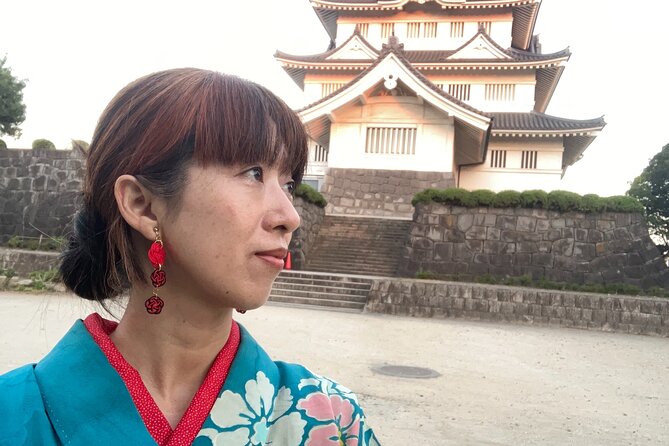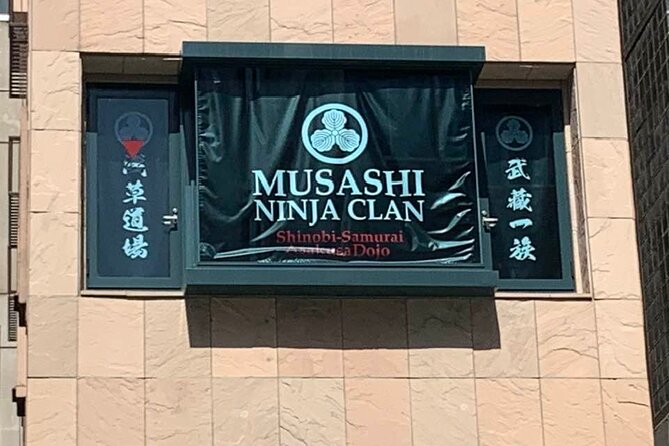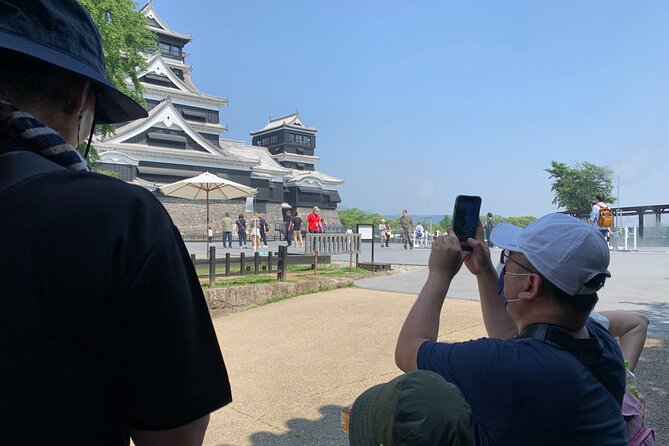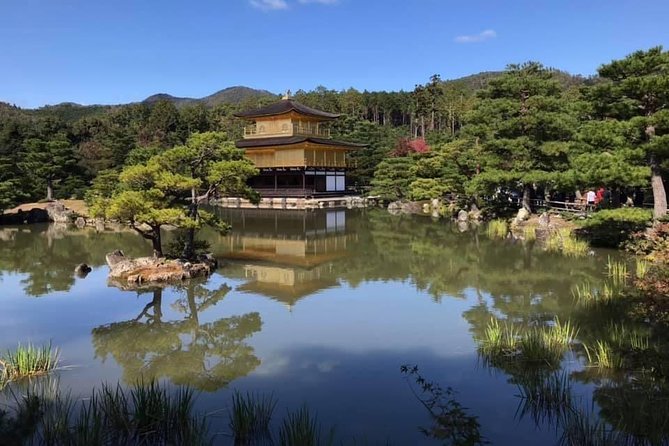As they step into the factory, visitors are immediately enveloped in the distinctive aroma of igusa grass, a scent synonymous with traditional Japanese culture. The air is alive with the soft rustling of fibers and the quiet chatter of artisans at work. It’s here, amidst the hum of modern machinery and the gentle touch of human craftsmanship, that the ancient art of tatami-making comes alive. But what secrets lie behind this intricate process, and how has this humble mat become an integral part of Japanese daily life? The journey to uncover the essence of tatami culture is about to begin.
Just The Basics
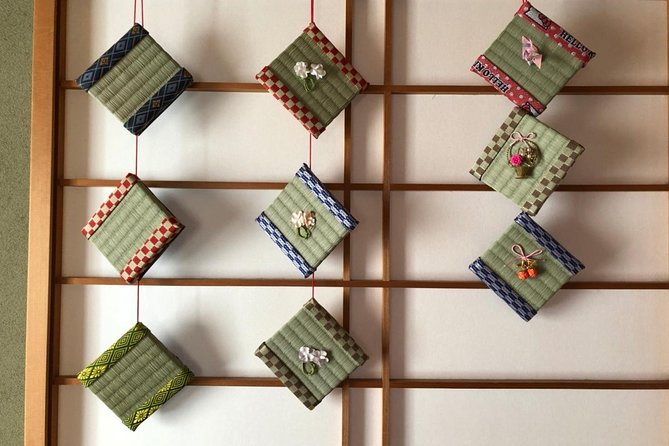
• Discover the centuries-old craft of tatami-making through a factory tour, revealing the intricacies of this traditional Japanese art form.
• Learn about the history of tatami mats, from their origins in the Heian period to their modern-day significance in Japanese culture.
• Witness the harmonious blend of traditional craftsmanship and modern machinery during the factory tour.
• Experience the meticulous attention to detail and care that goes into creating each handmade tatami mat.
• Uncover the cultural significance of tatami mats, including their symbolism of good luck, longevity, and harmony with nature.
Discovering Tatami Culture
What secrets lie behind the intricately woven tatami mats that have been an integral part of Japanese culture for centuries, and how can a visit to a factory in Saitama Prefecture reveal the fascinating story of this ancient tradition?
As visitors step into the Miyazaki Tatami Shop, they’re immersed in a world of tradition and craftsmanship. The air is thick with the scent of fresh igusa grass, and the sounds of machinery hum in the background.
The art of tatami-making is where precision and patience come together to create these iconic mats. With every step, visitors will uncover the intricacies of this centuries-old craft, and gain a deeper appreciation for the role tatami plays in Japanese daily life.
The History of Tatami Mats
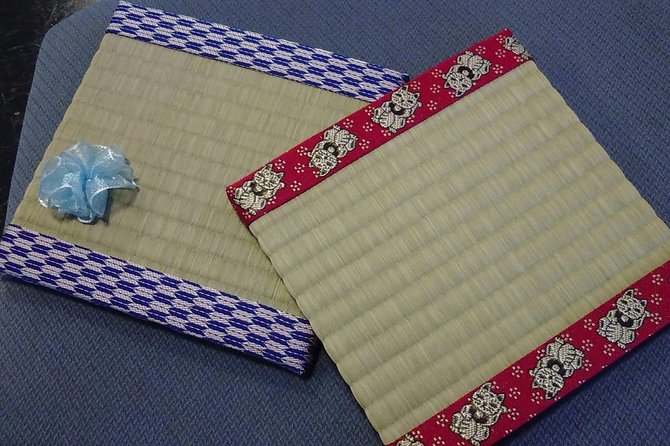
The origins of tatami mats date back to the Heian period, around 794-1185 AD, when they were first used as floor coverings in Japanese nobility’s homes.
During this time, tatami mats were made from woven grass or reeds, providing a soft and comfortable surface for the aristocracy.
As Japanese culture evolved, so did the design and materials used in tatami mats.
By the Edo period (1603-1868), tatami mats had become an essential element in traditional Japanese architecture, with intricate designs and patterns woven into the fabric.
Today, tatami mats continue to play a significant role in Japanese culture, symbolizing hospitality, respect, and tradition.
Factory Tour Experience
Step into the Miyazaki Tatami Shop’s factory and discover the intricate process of crafting these traditional Japanese mats, where centuries-old techniques blend seamlessly with modern machinery.
As you walk through the facility, you’ll witness the harmonious blend of traditional craftsmanship and innovative technology.
The factory’s friendly owner, dedicated to preserving Japan’s cultural heritage, will guide you through the production process, sharing insights into the art of tatami-making.
You’ll get a glimpse into the meticulous attention to detail and care that goes into creating each mat, from the selection of high-quality materials to the final product.
The factory tour is an immersive experience that will leave you with a deeper appreciation for this unique aspect of Japanese culture.
Handmade Tatami Process
As the factory owner guides you through the handmade tatami process, you’ll witness artisans meticulously weaving and knotting grass fibers into intricate patterns, their skilled hands moving in harmony with the gentle rustle of the materials.
The air is filled with the earthy scent of igusa grass, carefully selected for its durability and softness.
With each delicate touch, the artisans bring the tatami mats to life, their patience and dedication evident in every stitch.
As you observe the process, you’ll gain a deeper appreciation for the craftsmanship and tradition behind this ancient Japanese art form.
Every handmade tatami mat is a testament to the artisans’ skill and dedication to preserving this unique aspect of Japanese culture.
Meeting the Craftsmen
During the tour, you’ll have the unique opportunity to personally meet the skilled craftsmen responsible for bringing these traditional mats to life. These artisans have spent years honing their craft, and their passion for tatami-making is evident in every stitch. As you chat with them, you’ll gain insight into the dedication and precision that goes into each handmade mat.
Ask the craftsmen about their favorite designs and learn about the inspiration behind their work. Watch as they demonstrate their skills, from weaving to stitching, and get a closer look at the intricate processes involved. Take photos with the craftsmen to commemorate your unique encounter and create unforgettable memories.
Exploring Japanese Tradition
Through the factory tour, visitors explore the rich history of tatami craftsmanship, uncovering the significance of this traditional Japanese art form. As they walk through the facility, they’re immersed in the sights, sounds, and smells of this ancient craft. The air is thick with the scent of igusa grass, and the sound of machines and hands working in harmony creates a sense of rhythm.
| Tatami Tradition | Significance |
|---|---|
| Igusa Grass | Symbol of good luck and longevity |
| Handmade Craftsmanship | Represents dedication and attention to detail |
| Traditional Designs | Reflects Japanese aesthetics and cultural heritage |
| Natural Materials | Emphasizes harmony with nature |
As visitors explore the factory, they gain a deeper understanding of the cultural significance behind this traditional craft, and how it continues to play a vital role in modern Japanese life.
Behind the Scenes Story
Meet the artisans who’ve spent decades perfecting their craft, as they share the stories and secrets behind the intricate process of creating these iconic mats.
With hands that move with precision and eyes that shine with passion, they reveal the techniques passed down through generations.
From the selection of the finest igusa grass to the precise weaving and cutting, every step is a testament to their dedication.
Watch as they expertly weave the grass strands into a sturdy yet soft fabric.
Learn about the ancient tools used to shape and cut the mats.
Discover the secret to creating the distinctive tatami aroma that fills the air.
Taking Home Memories
As they wrap up their hands-on experience, visitors take home not only a deeper appreciation for the art of tatami-making but also a unique souvenir, carefully crafted with their own hands.
This personalized memento serves as a tangible reminder of their immersive journey into Japan’s traditional craft.
With every glance, they’ll relive the sights, sounds, and sensations of the tatami factory tour.
The handmade souvenir also makes for a thoughtful gift, allowing visitors to share their extraordinary experience with loved ones.
As they cherish their one-of-a-kind keepsake, they’ll be inspired to continue exploring the wonders of Japanese culture, fostering a lifelong appreciation for this ancient art form.
Frequently Asked Questions
Is the Factory Tour and Handmade Tatami Experience Suitable for Children?
She wonders if the factory tour and handmade tatami experience is suitable for children, considering the machinery and delicate processes involved, but unfortunately, there’s no specific information available about age restrictions or child-friendliness.
Are There Any Language Support Services Available for Non-Japanese Speakers?
She wonders if language support services are available for non-Japanese speakers, ensuring a smooth experience. Unfortunately, there’s no explicit mention of language support, so it’s best to inquire with the tour operator beforehand to arrange assistance if needed.
Can I Purchase Handmade Tatami Mats On-Site or Online?
She can purchase handmade tatami mats on-site at the Miyazaki Tatami Shop, where the factory tour and experience take place, or potentially online through the shop’s website or other platforms, though online availability isn’t explicitly confirmed.
Are There Any Specific Dress Code Requirements for the Experience?
She’s curious about dress code requirements, and the answer is: there aren’t any specific dress code rules for the experience, so she can wear comfortable clothes and shoes suitable for a factory tour and hands-on activity.
Are There Any Opportunities for Photography During the Factory Tour?
She’ll have plenty of opportunities to snap photos during the factory tour, capturing the intricate process of handmade tatami production and the machinery used to create these traditional Japanese mats.
Not for you? Here's more of our most recent tour reviews happening neaby
- Carve Your Own Jade Carvings, Jade Carving Workshop
- Mikoshi, a Portable Shrine Into the River! Chichibu Kawase Fest.
- Custom Made Jade Carvings
- Cultural Sake Brewery Private Tour & Unlimited Tasting Near Tokyo
- Local Half Past 12 Meeting, Rafting Tour Half Day (3 Hours)
- Experience Seasonal Green Tea Picking in Sayama and Nostalgic Walk in Kawagoe!
Final Words
As the factory tour comes to a close, visitors depart with a newfound respect for the intricate art of tatami-making and a deeper understanding of Japan’s rich cultural heritage.
With memories of the skilled craftsmen and the soothing scent of igusa grass, they take with them a piece of traditional Japan, eager to share their unique experience with others.

